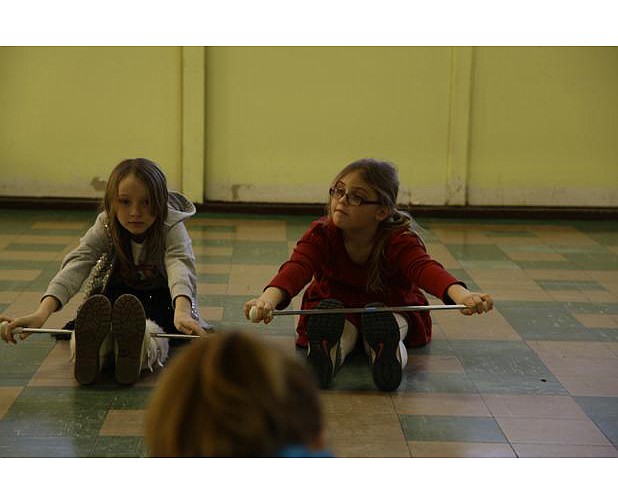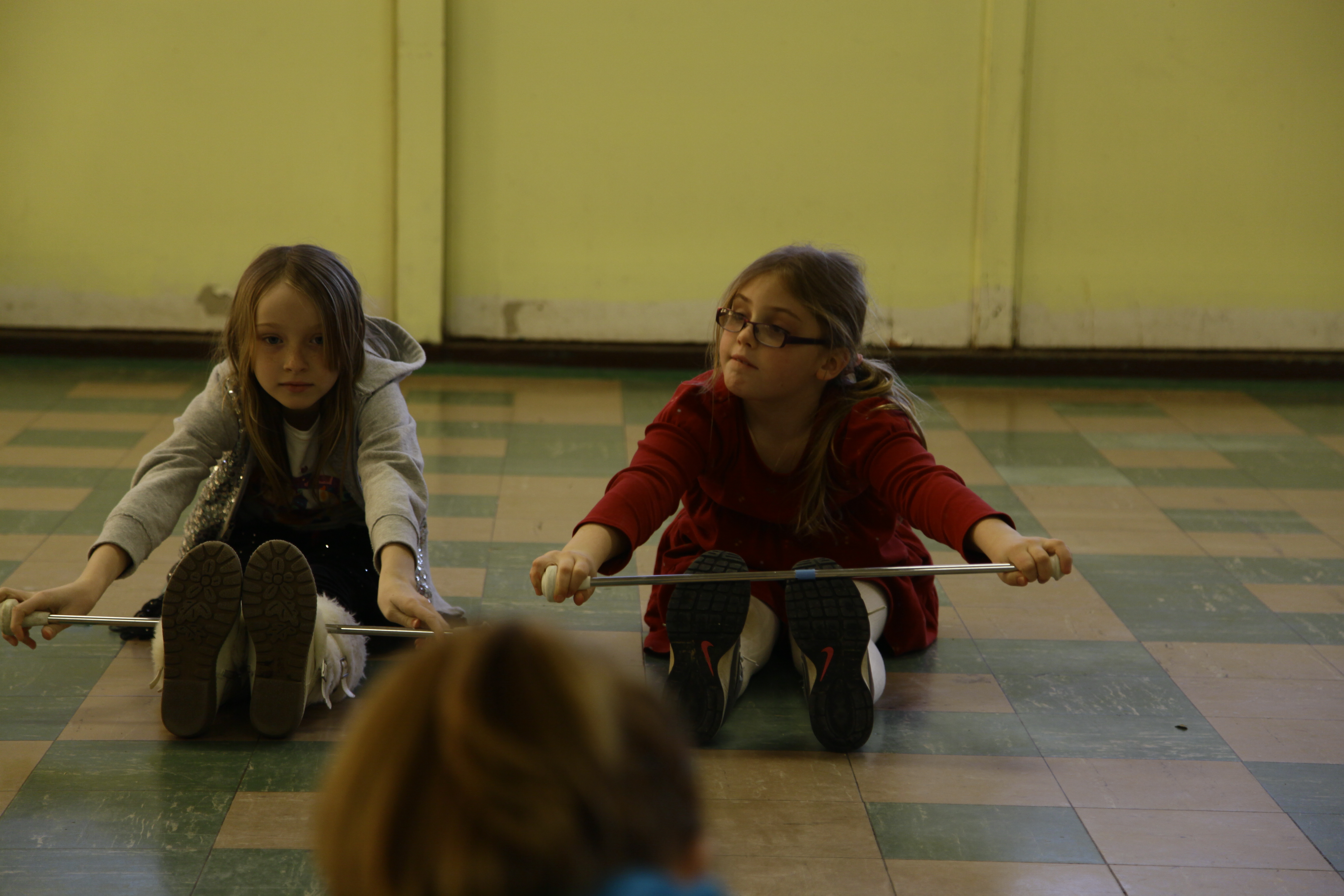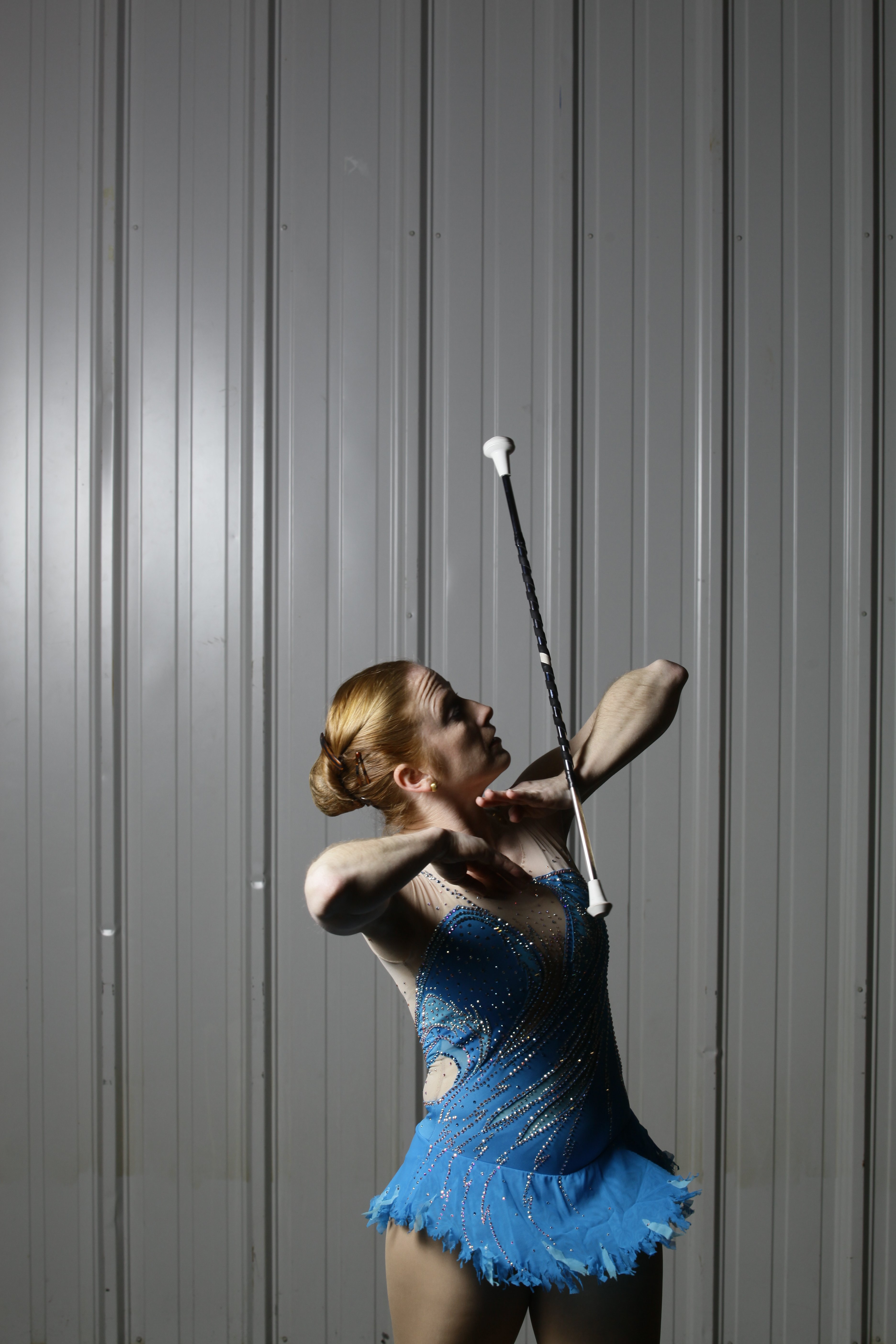BATON MOVES• Left Backhand Release Double Knuckle Pop• Lasso Straddle• Thumb Flip Under Leg• Double Leg Roll• Elbow-Arm Roll• Palm Spin Bat Up• Leg-to-Leg• Helicopter
Ashley Holt is spinning plans for a creative future.
"When I grow up, I want to be a famous baton twirler or an artist," the 9-year-old says.
Her love of drawing comes naturally, but she's been actively working on the baton skill set for about three years.
"I love twirling," Ashley says. "At first, it was really hard because I wanted to twirl like my friend, but she had been taking lessons already. Finally, I got better. But I do have to practice a lot. I go to lessons about three times a week. I go early so I can practice before class."
In the 21st century, baton twirling may sound like a quaint relic of the 1950s or '60s, conjuring up visions of white-booted high school coeds high-stepping around the football field, sequined suits glittering while batons twirl, spin, figure eight and fly high in the sky.
But while plenty do it for the love of the twirl, contests testing baton skills are fiercely competitive, especially in countries such as France and Japan. And here in the United States, even while low in profile, baton twirling is an active pursuit and growing.
"Twirling is not often recognized in the community. So many people don't realize that it is around and thriving," says Chattanoogan Jenny Hannah, a thirtysomething who's been twirling since kindergarten.
Hannah is associate director and coach at Chattanooga's United Twirling, which has about 60 beginning twirlers ranging in age from 3 to college years.
"I believe that twirling is great for young girls because it keeps them active, helps them with coordination and assists those who may be shy come out of their shell," says Hannah, who will compete in the U.S. National Championships in Daytona Beach in July and the International Cup Championships in Holland in August.
Kimberly Smith says her 14-year-old daughter, Frances Ann, has been taking baton lessons from Hannah for the last two years.
"My daughter has Down syndrome, and Jenny is so patient with her," Smith says. Frances Ann is determined. She loves to entertain, so it's not surprising how much she is enjoying this sport. She's going to twirl in a talent show at her school."
Twirling may be in Frances Ann's DNA because her mother was a twirler, too.
"For whatever reason I kept my baton," she says. "I found Frances Ann playing with it one day. She practiced in her bedroom, and my husband and I would hear the baton hitting the hardwood floor. She would do it over and over until finally, one day, she got the hang of it. My husband noticed that we didn't hear the baton hitting the floor so we knew she was getting better."
While almost anyone can learn to twirl with enough practice, Hannah says, the ones who go into the competitions must be a step above the casual twirler.
"Today's twirlers truly are athletes," she says. "They must twirl, dance and do gymnastics, often simultaneously. Just like any other athlete, twirlers must be strong mentally and physically,"
Twirling has been a competitive sport since the first United States Twirling Association National Championship in 1958, Hannah says. The first World Championship was held in 1980.
"Unfortunately, in the United States, the competitive side of twirling frequently runs under the radar of public awareness," Hannah says. "In other countries, such as France and Japan, the sport is very popular and often televised. Last August, when I performed in the World Championships finals in Paris, France, a sold-out audience of over 6,000 fans packed the arena."
But America is catching up, Hannah says.
"Today there are more competitive opportunities for twirling than in the past," she says. "In 2011, the World Baton Twirling Federation was recognized as a new member of the World Dance Sport Federation. This is a significant step toward the ultimate goal of becoming an Olympic sport. In the fall of 2013, twirling will be an official sport in the World DanceSport Games in China."
Tracy Hughes, 32, director of United Twirling, is a second-generation twirler.
"My mother was a majorette in high school and also taught twirling," Hughes says. "She started me in private lessons when I was 7, and we would travel to Nashville every month for competitions. Thanks to twirling, I have traveled to most every state in the United States."
With a bachelor's degree from the University of Tennessee at Chattanooga and a master's from Florida State University, Hughes says her "real job" is teaching full-time in the math department at UTC.
"I started teaching baton when I was 16 at local elementary schools for ASTO (All State Twirling Organization), which closed in 2003. I started United Twirling in August of 2003 because I love twirling, I love teaching twirling, and I wanted to give girls the chance to experience this sport."
Though Hannah was never been a majorette, she has competed in the sport since elementary school. With undergraduate and master's degrees from the University of Tennessee at Chattanooga, Hannah is a student in the Chattanooga State Physical Therapist Assistant program.
United Twirling has 30 team members divided into four teams -- senior, juvenile, primary and tiny tot -- which compete in the United States Twirling Association state, regional and national championships each year, Hannah says.
While Hannah doesn't know of any male twirlers in the Chattanooga area, it's open to both sexes.
"In the United States, there are a number of elite male twirlers," Hannah says. "In other countries, such as Japan and France, it is more accepted for boys to twirl. Japanese men are considered the best twirlers in the world."
Susan Holt's daughters, Ashley and 4-year-old Lauren are among the student twirlers.
Ashley has taken twirling for three years and is a two-year member of a United Twirlers team while Lauren is in a beginner class, Holt says.
Holt says she knew nothing about twirling before Ashley began taking the class from Hannah.
"I had a misunderstanding of what twirling meant. I had no idea it was so involved," she says. "Ashley starting taking the class because one of her friends was doing it. At the time, she hadn't found any sport that she enjoyed. By the end of the year, her skills were so good that Jenny wanted her to be on a competitive teams."
Ashley says she loves competitions, but "sometimes I get nervous, especially at the nationals when there are so many people, but we always have fun."
And twirling has had a positive effect on Ashley, Holt says.
"She has blossomed, gotten more self confident, and she finally found something she loves," Holt says.


